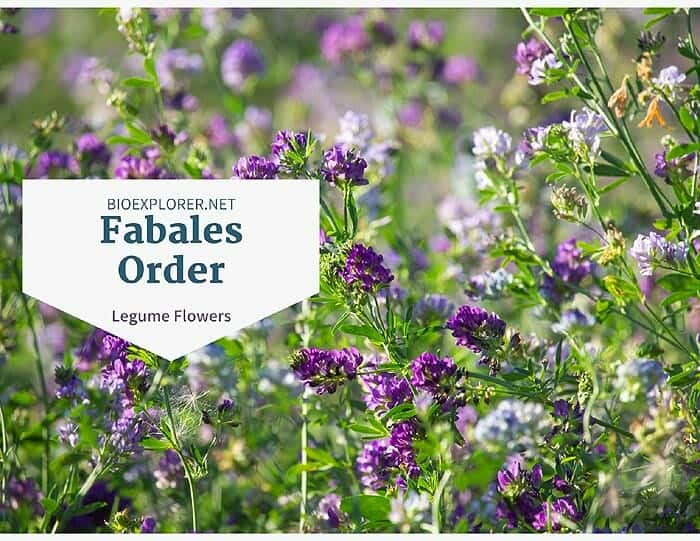
Fabales is an order of dicotyledonous flowering plants belonging to the Rosid I group of the core eudicots. The order is divided into 4 families called Fabaceae, Polygalaceae, Quillajaceae, and Surianaceae. Almost 95 percent of the genera of Fabales are from the Fabaceae family, commonly called the legume family.
Fabaceae has immense significance as a source of food for humans and livestock and the manufacturing of industrial goods.
Most of the Fabaceae plants have bacteria-harboring root nodules that play a role in maintaining the nitrogen balance of soil, which is essential for plant growth. Thus, legumes play an important part in nature and agricultural practices. The more common types of legumes are peas, soybeans, beans, alfalfa (lucerne), peanuts, and clover.
The typical fruit of most Fabaceae plants is a pod (legume) that consists mainly of an ovary in the shape of a tightly folded leaf, called a pea pod. When the pea pod matures in most plants, it usually splits into two halves, releasing the seed.
Table of Contents
Fabales Distribution
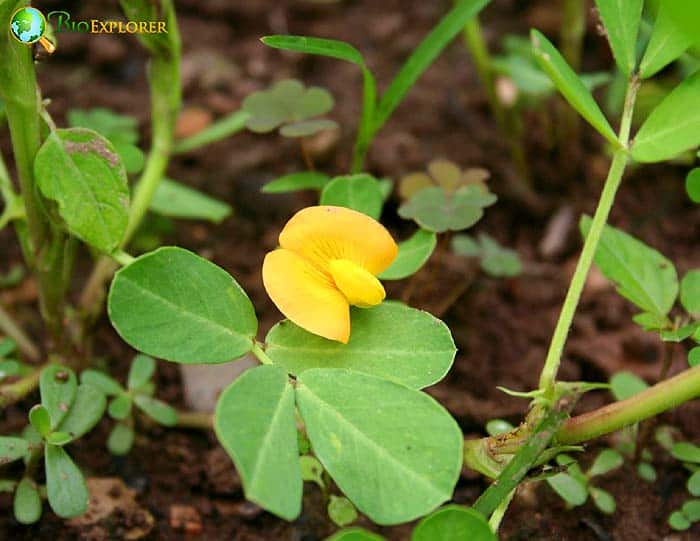
A) Fabaceae
Fabaceae is commonly called the pea or legume family of flowering plants. After Orchidaceae and Asteraceae, Fabaceae forms the third largest family of angiosperms. This family consists of shrubs, trees, vines, and herbs that are distributed worldwide. Among these, woody species are usually tropical, while herbaceous species are commonly found in temperate regions.
The legumes are of immense economic significance since they are a source of many types of pulses. The herbaceous legumes are the most valuable, such as the genus Phaseolus from which several species of beans are produced, and Glycine, which is a source of soybeans. The woody legumes are also valuable as they are used to produce fuelwood[1], timber, forage, resins, toxins, and dyes.
The Fabaceae are also important ecologically since many species contain nitrogen-fixing rhizobial nodules that contribute to soil fertility. Thus, these are used as fodder and soil rotation plants as well.
![]()
B) Polygalaceae
Polygalaceae, commonly known as the milkwort family. After Fabaceae, it is the second-largest family in Fabales. The plants of this family are found worldwide, except for New Zealandand the Arctic. A majority of the species of this family belong to the genus Polygala.
Polygalaceae comprises shrubs, trees, and even parasitic herbs that lack green chlorophyll. This family has economic importance as a source of ornamental cultivars and medicinal plants.
![]()
C) Surianaceae
Surianaceae consists of trees or shrubs with leaves that are simple and arranged spirally. Some of the genera of this family are found in the following regions:
- Cadellia, Guilfoylia, and Stylobasiumare distributed in Australia (Cadellia, Guilfoylia, and Stylobasium).
- Recchia is found in Mexico.
- Surianais present in pantropical littoral areas.
![]()
D) Quillajaceae
Quillajaceae contains a single genus called Quillaja, with only three species distributed in temperate South America. The plants of this family are small, evergreen trees having a bark that is rich in saponins.
![]()
Fabales Characteristics
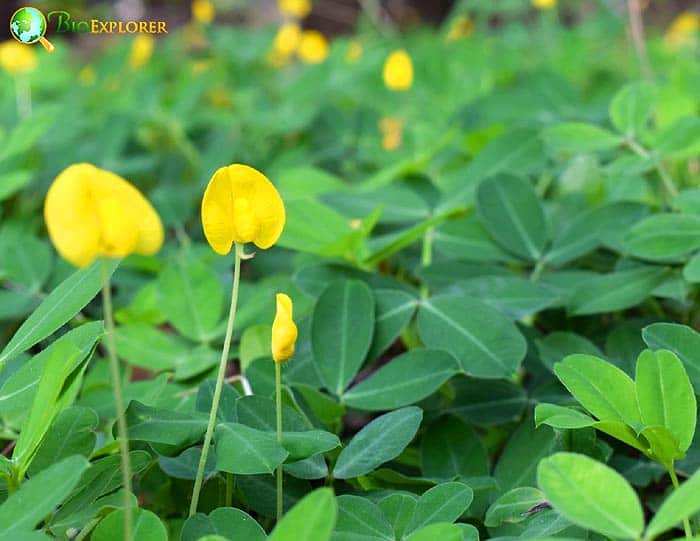
The Fabales contain various types of plants such as herbs, vines, and trees that have stipulated compound leaves.
- A common characteristic of these plants is a dehiscent seedpod containing seeds arranged in a row or individually in sections.
- The Flowers contain 10 or more stamens. Another feature that is common in this order is a symbiosis with nitrogen-fixing bacteria. The bacteria live in the plant’s unique root nodules and promote plants’ growth even on poor soils.
- In addition, these bacteria convert atmospheric nitrogen into ammonia, providing the plant with a form of Nitrogen easily assimilated by it to produce essential biomolecules required for plant growth.
- It is said that this symbiotic relationship with nitrogen-fixing bacteria has allowed the widespread growth of Fabales in diverse environments all over the world.
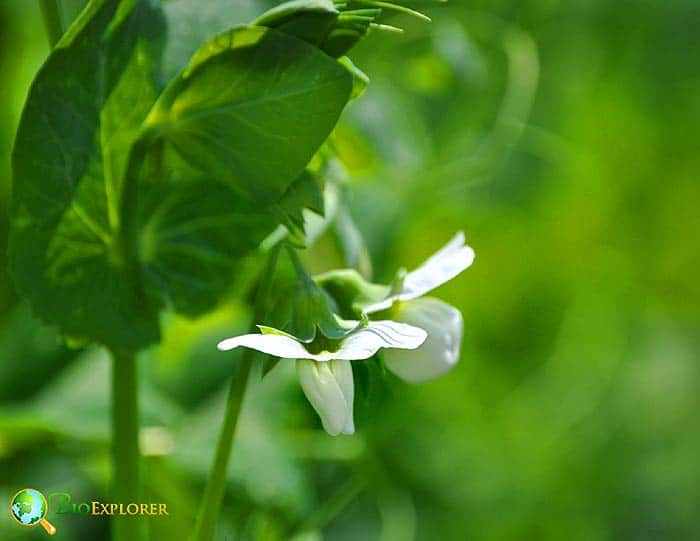
![]()
Fabales Statistics Table
| Fabaceae | 770 genera, 19,500 species |
Cercidoideae: 12 genera Dialioideae: 17 genera Detariodeae: 84 genera Duparquetioideae: monospecific Faboideae (Papilionoideae): 503 genera Caesalpinioideae: 150 genera |
| Polygalaceae | 21 genera, 965 species | |
| Surianaceae | 5 genera, 8 species | |
| Quillajaceae | 1 genus, 2 species |
![]()
Distinctive Features of the Fabales Families
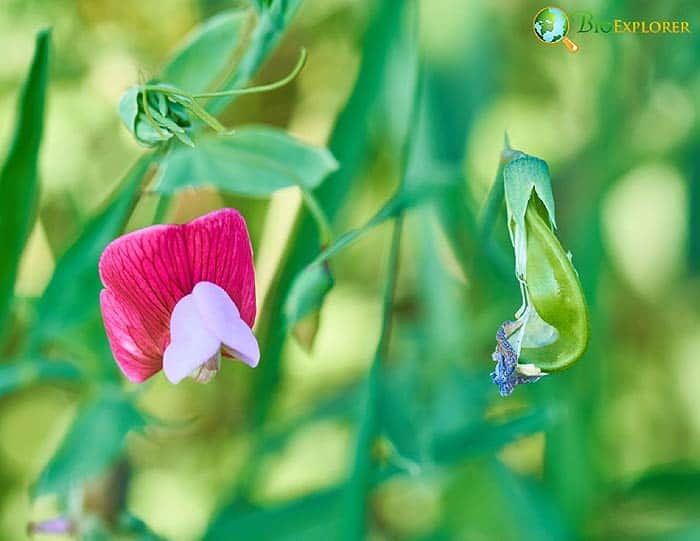
A) Fabaceae
The Fabaceae are shrubs, trees, vines, or herbs, with the following distinctive features:
- stipulate, mostly compound leaves.
- Pentamerous flowers that have a single, unicarpellous pistil with marginal placentation.
- The fruit is a legume.
The Fabaceae are divided into five monophyletic subfamilies Cercidoideae, Dialioideae, Detarioideae, Duparquetioideae, and Faboideae or Papilionoideae.
The Cercidioideae are distinguished by the following features:
- The leaves are unifoliolate (unlobed blade or, e. g., in Bauhinia, bilobed having central apical process) or bifoliolate (geminate) leaves.
- Flowers imbricate petals with posterior inner to the laterals, distinct stamens that are 10 or fewer in number.
- Seeds have an apical hilum shaped like a crescent.
The Caesalpinioideae has the following distinctive features:
- they have extrafloral nectaries present, usually on the leaf petiole, rachis, or rachillae.
- Bilateral or radial flowers with corolla either aestivation imbricate (with the posterior petal positioned inner to the lateral) or valvate.
- Stamens[1] 5-∞, distinct (staminodes in some species).
- The anthers mostly have an apical gland.
- Usually, pollen is present in tetrads or polyads.
- The Mimosoid Clade that previously formed a subfamily Mimosoideae is now listed in Caesalpinioideae. It is distinguished by the presence of radial flowers that have a valvate corolla having distinct or basally fused petals, as well as numerous stamens that are usually distinct or basally fused. A hypanthium is present sometimes.
The Faboideae or Papilionoideae is distinctive in the following ways:
- They grow “papilionaceous” flowers that have the following features:
- zygomorphic flowers having connate stamens (10 monadelphous or 9+1 diadelphous).
- The corolla (imbricate in bud) has five petals comprising a large, median, posterior petal (called banner) positioned outer to the adjacent petals such that it overlaps them.
- Two lateral “wing” petals that are overlapped by the banner.
- Two anterior, “keel” petals that are fused distally.
- In some species such as Clitoria, the flowers are resupinate such that the banner is anterior in position.
![]()
B) Quillajaceae
Some distinctive features of Quillajaceae are:
- Spirally arranged leaves that are toothed.
- There are five parted flowers in the terminal inflorescence, usually having a well-developed nectary inserted into the hypanthium or floral cup.
- Remarkable-looking flowers have stamens opposite to the sepals emerging from the hypanthium disk’s outer edge, while the stamens that are present opposite to the petals emerge from the ovary’s base.
- The ovary has five carpels that mature into follicles to split along one side, releasing winged seeds.
![]()
C) Polygalaceae
This family has trees, lianas, shrubs, or herbs, with the following distinctive features:
- Simple leaves that are arranged spirally and are exstipulate in most species.
- Bisexual flowers:
- Have a perianth biseriate, having 5 sepals of which 2 inner are often petaloid (resemble wing petals), petals 3-5, when 3, which is the anterior petal, is usually fringed apically and boat-shaped.
- Poricidal or longitudinally dehiscent anthers.
- Usually, the style is 2-lobed with one stigmatic lobe and the other sterile.
- Ovule 1 per carpel.
- arillate seeds (with caruncle).
![]()
D) Surianaceae
The plants of Surianaceae are trees or shrubs with the following features:
- Simple, spirally arranged leaves.
- Bisexual flowers that are radially symmetric have five sepals and petals except in the genus Stylobasium withwind-pollinated, unisexual flowers that do not have petals.
- The number of carpels present varies from 1 to 5.
- The fruits are drupes, berries, or nuts.
![]()
Fabales Example Species
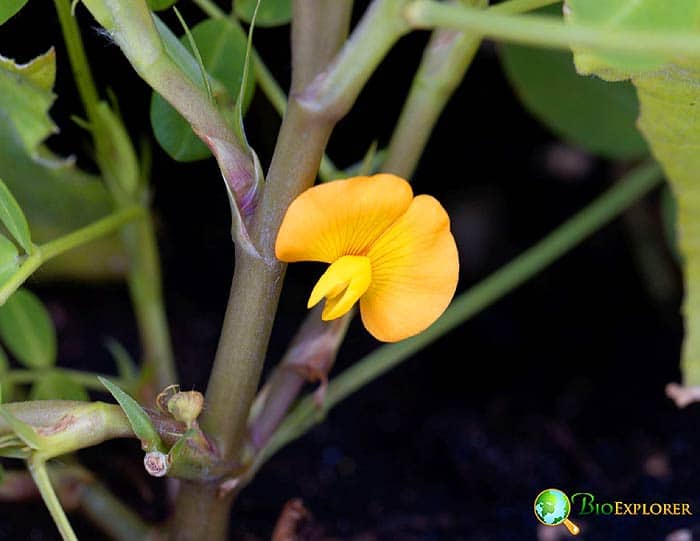
Some of the most important commercial species include:
- Soybeans (Glycine max) – an important food legume that is also a source of vegetable oil. It is mainly used for animal feed, and some products are also produced for human consumption, such as soy milk, soy flour, soy protein, tofu, and many retail food products.
- Garden peas (Pisum sativum) – consumed as a vegetable ingredient in various cuisines.
- Peanuts (Arachis hypogaea)
- Alfalfa (Medicago sativa) is a critical forage crop used for grazing and producing sillage, hay, green manure, and fodder.

![]()











